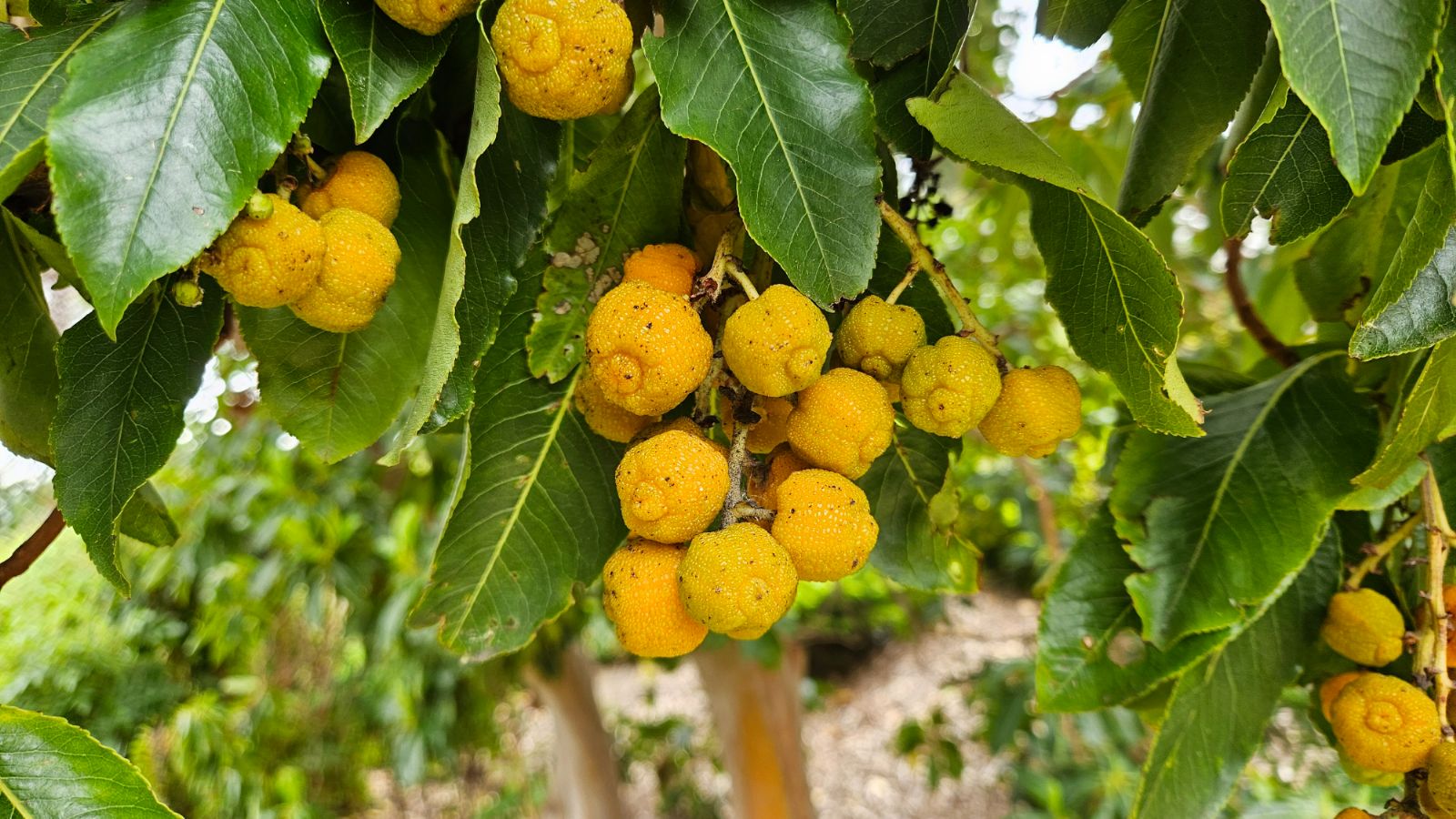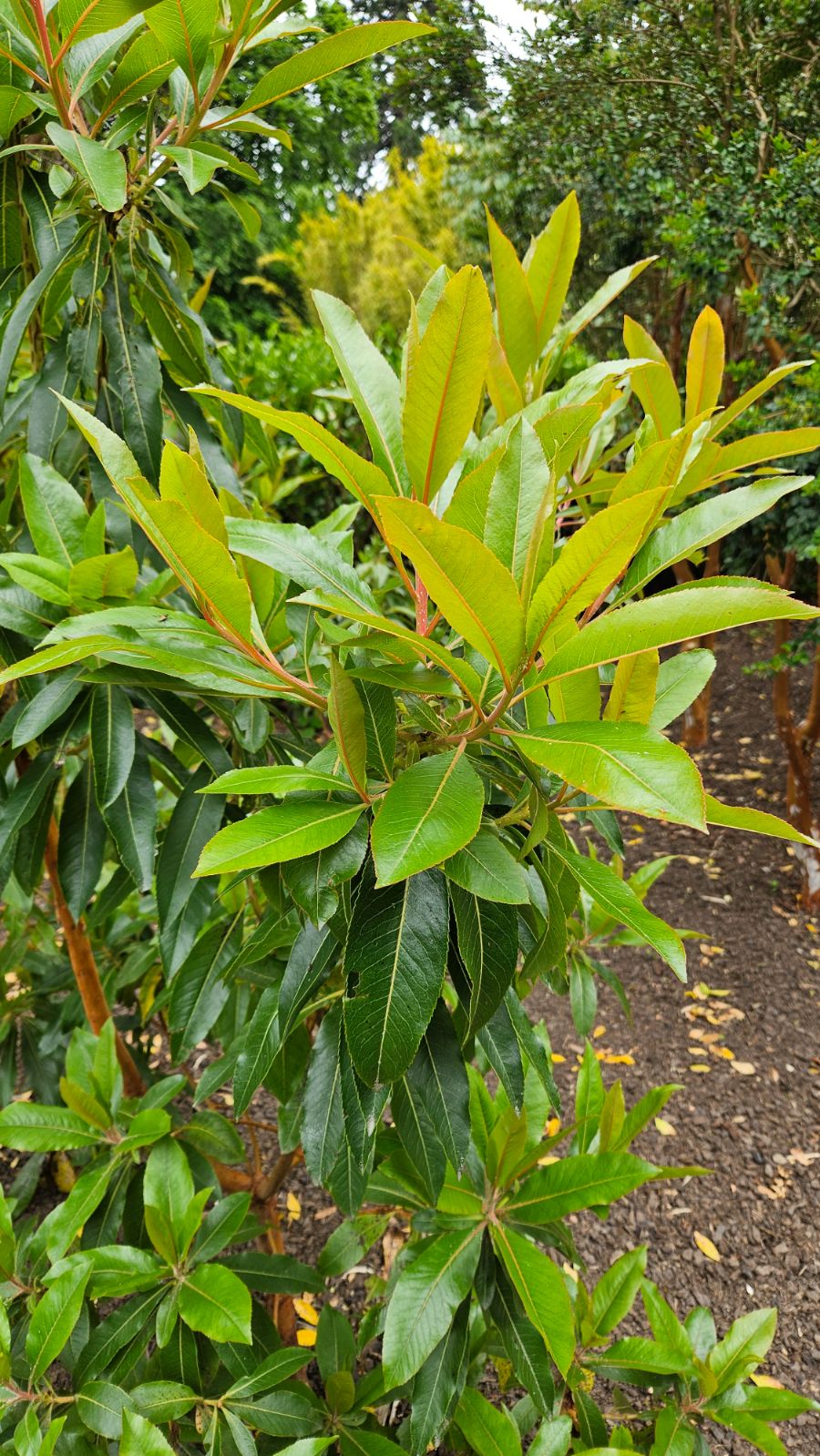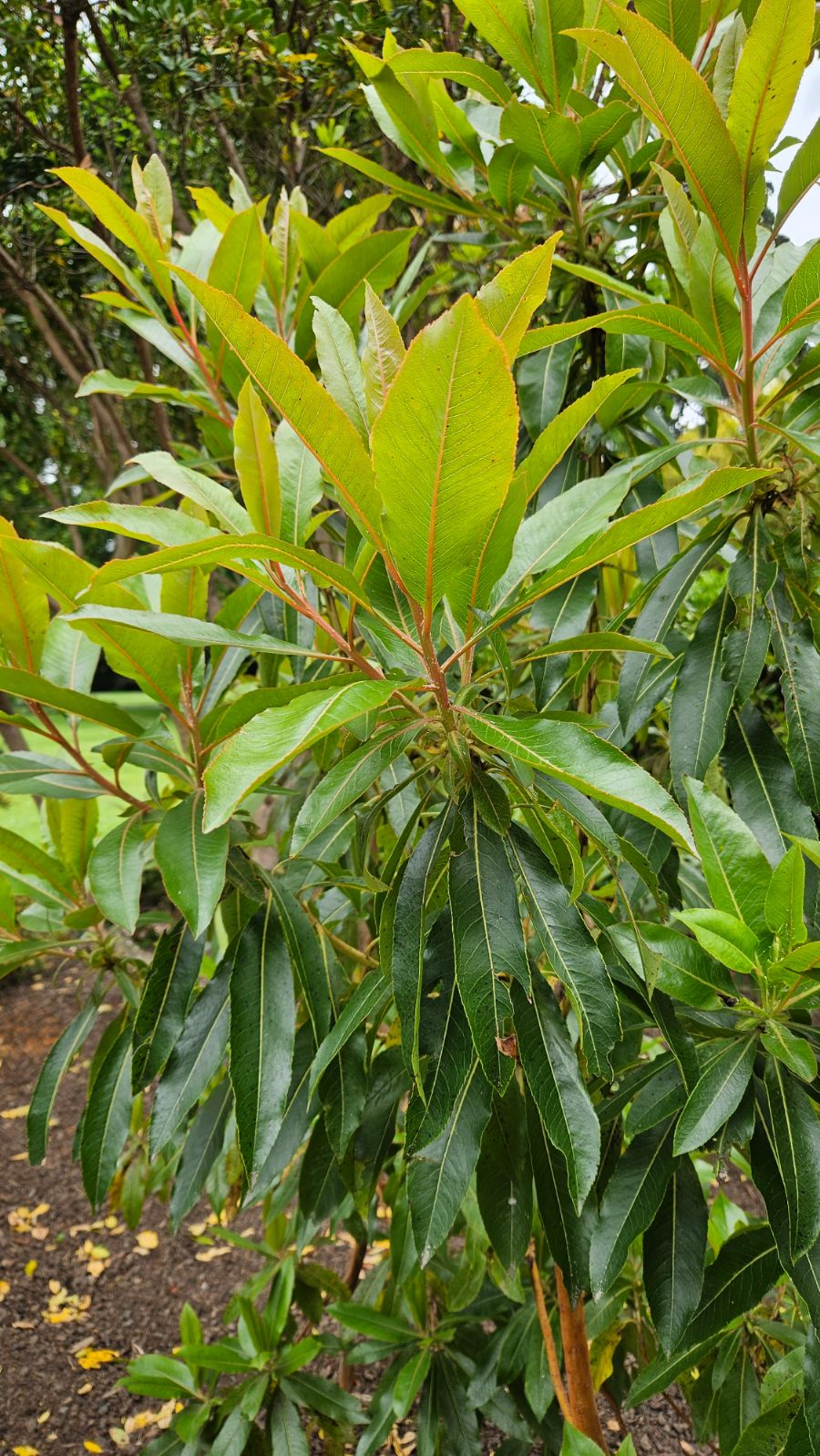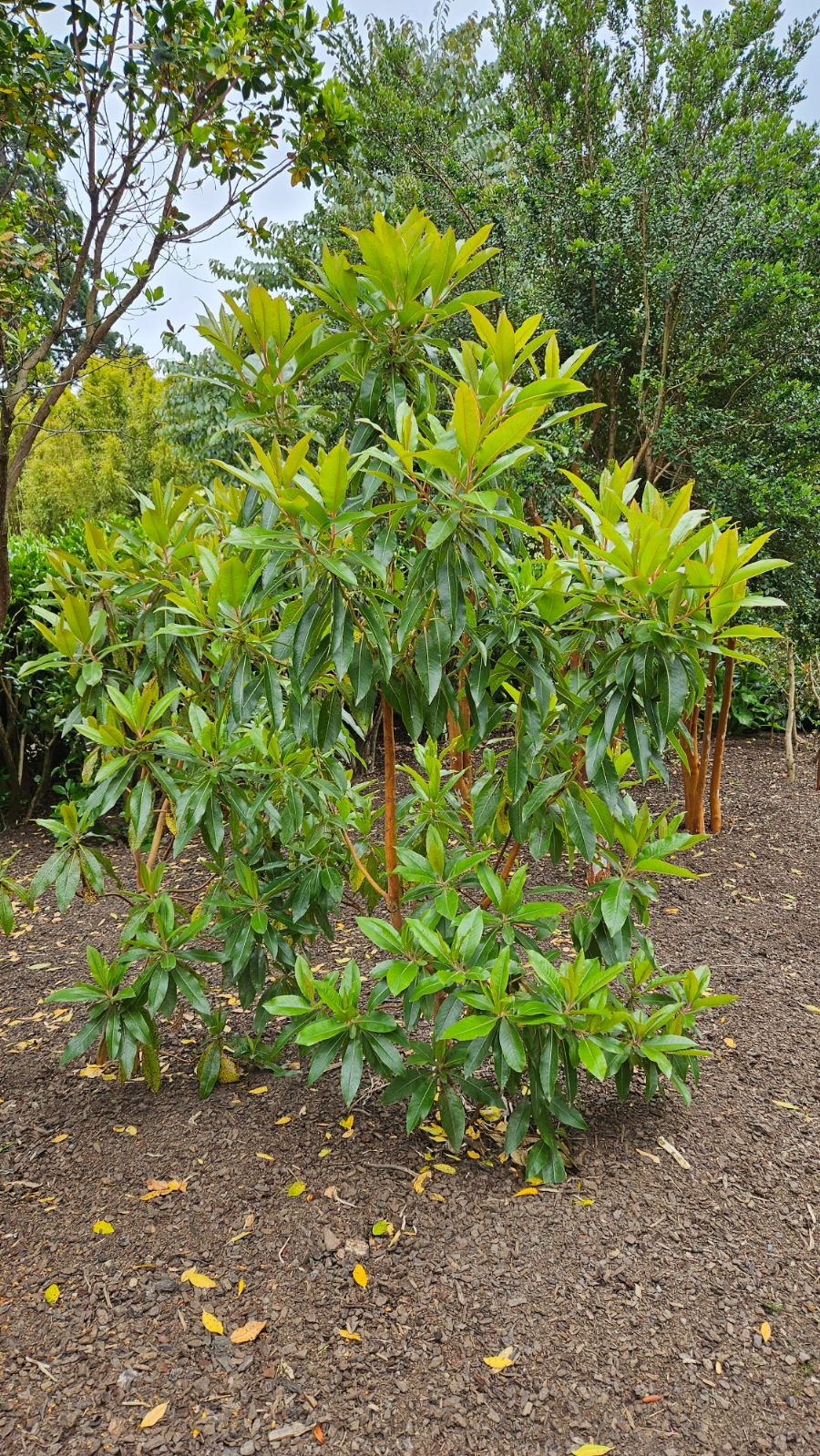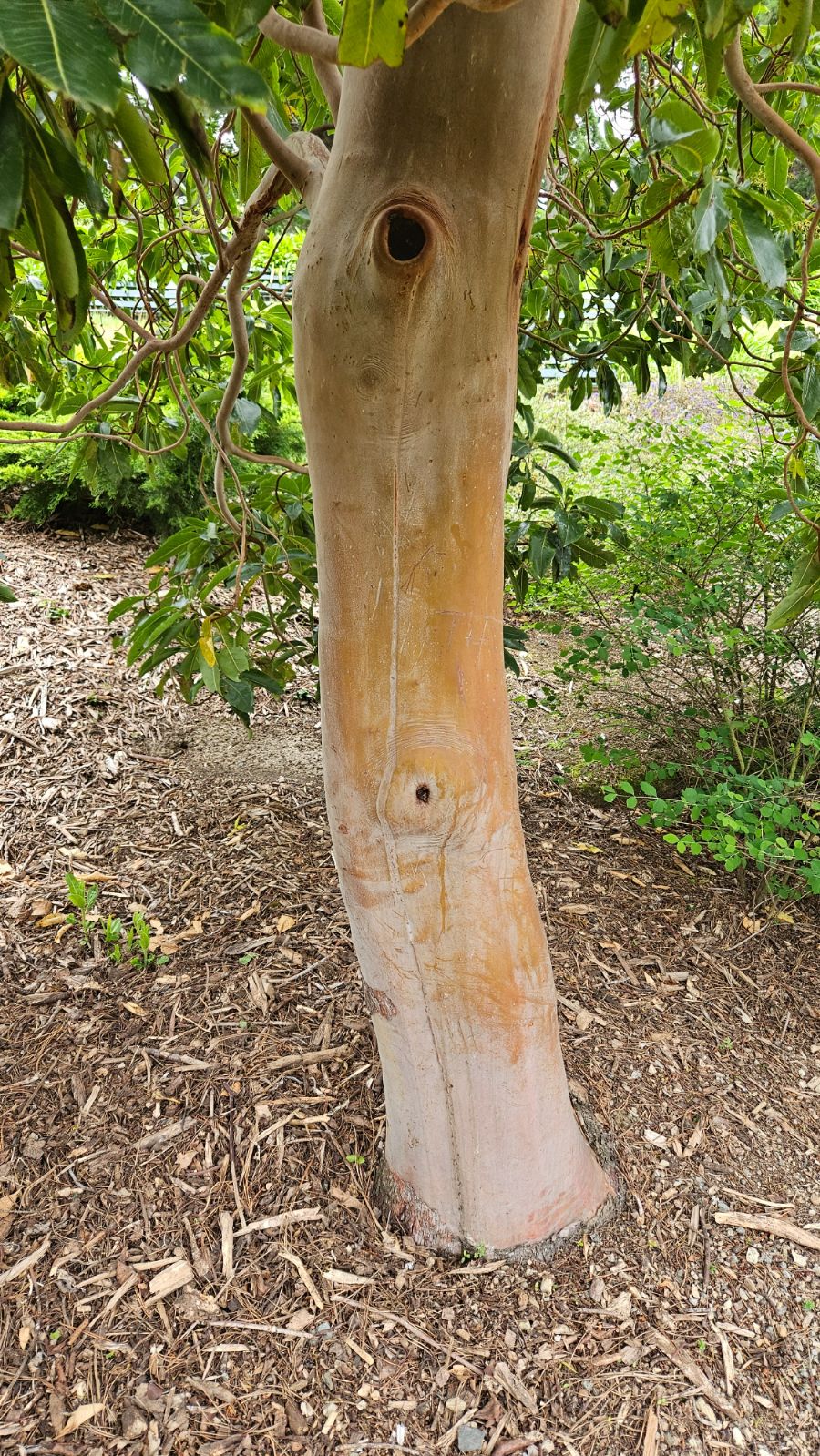Arbutus canariensis
Sponsor
Kindly sponsored by
a member of the International Dendrology Society
Credits
Julian Sutton (2021)
Recommended citation
Sutton, J. (2021), 'Arbutus canariensis' from the website Trees and Shrubs Online (treesandshrubsonline.
Genus
Shrub or small tree, 3–4(–10) m tall, with a dense, rounded crown. Bark dark red, peeling in papery strips to reveal new green bark beneath. Leaves oblong to lanceolate, to 15 cm long, with serrate margins, coriaceous, glossy dark green above, glaucous beneath, glabrous except sometimes on the midrib beneath. Inflorescence a pendent, terminal, many-flowered panicle with leafy bracts; pedicels glandular hairy. Flowers scented, corolla urceolate, to 1.5 cm, white to pink; ovary glabrous; usually flowering in autumn or early winter in the wild (summer or winter in European cultivation). Fruits rounded, 2–3 cm across, the surface granular, ripening yellow-orange. (Tigeras et al. 2018; Huxley et al. 1992; Edwards & Marshall 2019; Duhamel 1800).
Distribution Spain Canary Islands (Tenerife, La Gomera, El Hierro, La Palma and Gran Canaria)
Habitat Sunny margins and clearings in laurel forest, 500–1000 m.
USDA Hardiness Zone 9-11
RHS Hardiness Rating H3
Conservation status Near threatened (NT)
This is an attractive and characterful tree with peeling, dark red bark, and orange fruits at least as big as those of A. unedo. As a Canarian endemic, it has rarely been tested beyond the mildest parts of our area, but has proved to be a significant parent of hybrids.
It was first described from specimens collected in 1797 by the French gardening botanist Anselme Rieslé, a member of the Baudin expedition to the West Indies, the Canaries lying at one end of a convenient Atlantic crossing (Duhamel 1800). That it is a distinct species seems never to have been in much doubt. Molecular data confirm that it belongs to the Old World group of species, perhaps as sister to A. unedo plus A. andrachne (Hileman et al. 2001). It differs from A. unedo in its red, peeling bark; from A. andrachne in its glabrous ovary and serrate, usually narrower leaves; and from both in its much larger flowers and unambiguously orange rather than red fruit.
Only on Tenerife and perhaps El Hierro is it at all common (Tigeras et al. 2018); in 1998 there were thought to be less than 10,000 individuals remaing in much-divided populations, although the species and its habitat are now well protected, with numbers stable (IUCN 2021). It is primarily a tree of laurel forest, especially on steep slopes. It is sometimes suggested that Macaronesian endemics may be relicts of a much wider Tertiary distribution in Eurasia, although the evidence is rarely good, and other origins are possible. In this case, molecular clock data suggest that A. canariensis diverged from its living relatives in the Miocene, very roughly 10 MYA, an early enough date that the relict hypothesis is viable, if unproven (Kondraskov et al. 2015).
In Europe it has mainly been grown in Mediterranean gardens, outside our area. A large specimen at the Villa Thuret, Antibes, France, dates from the early 20th century and flowers right through the winter; it was at one time mislabelled A. glandulosa, a synonym of A. xalapensis. A second venerable tree on the Côte d’Azur grows at Serre de la Madone, Menton (Demoly 2004).
Older specimens in Britain are few, and confined to the maritime south west and urban heat islands. The Tree Register (2021) records specimens at Tresco Abbey Gardens, Isles of Scilly (8 m × 74 cm, 2016); Lamorran House on the Roseland Peninsula, Cornwall (5 m × 53 cm, 2016); and a young, bushy plant in the Chelsea Physic Garden, London (3.5 m tall, 2016). The Atlantic fringes of France and Ireland might also prove suitable; it has certainly been grown in private gardens in Brittany (Demoly 2004). Beyond this, it has usually been grown as a greenhouse subject in our European area, for example at RBG Edinburgh and Bonn University Botanic Gardens (Royal Botanic Garden Edinburgh 2021, Botanische Gärten der Universität Bonn 2021). However, two examples in Gloucestershire (an area with much colder winters) suggest that experimentation is worthwhile. Nick Macer (pers. comm. 2021) has a 3 m tall specimen near Stroud, which was defoliated but suffered no tip damage during a period of freezing easterlies and snow (but only about –5 °C minimum) in February 2018, and there is a record of an upright, shrubby specimen from a 2002 accession, planted under tree canopy in 2002 at Westonbirt, (Forestry England 2021).
In North America it is grown in several Californian collections (Grimshaw & Bayton 2009); there is a very fine specimen dating from about 1890 in San Francisco Botanical Garden, with much branching from a short, stout trunk (monumentaltrees.com 2021). A. canariensis shows real garden potential in Australasia. Dunedin Botanic Garden, New Zealand has three trees grown from Canarian seed in 1991, fruiting regularly adjacent to the rock garden. Here they flower in early summer, the fruit taking more than a year to develop (Abernethy 2015). A Melbourne nursery markets it for well-drained soils with irrigation, claiming year-round flowering, and that the bark can turn mid-purple with extreme Australian heat and sun (Speciality Trees 2021).
On Tenerife, Arbutus canariensis has hybridized with naturalized A. unedo to give A. × androsterilis (q.v.). The garden hybrid A. × thuretiana is A. canariensis × A. andrachne (q.v.). The important cultivar ‘Marina’ is currently thought to represent A. × reyorum (q.v.), a three-way hybrid A. canariensis × (A. unedo × A. andrachne).

